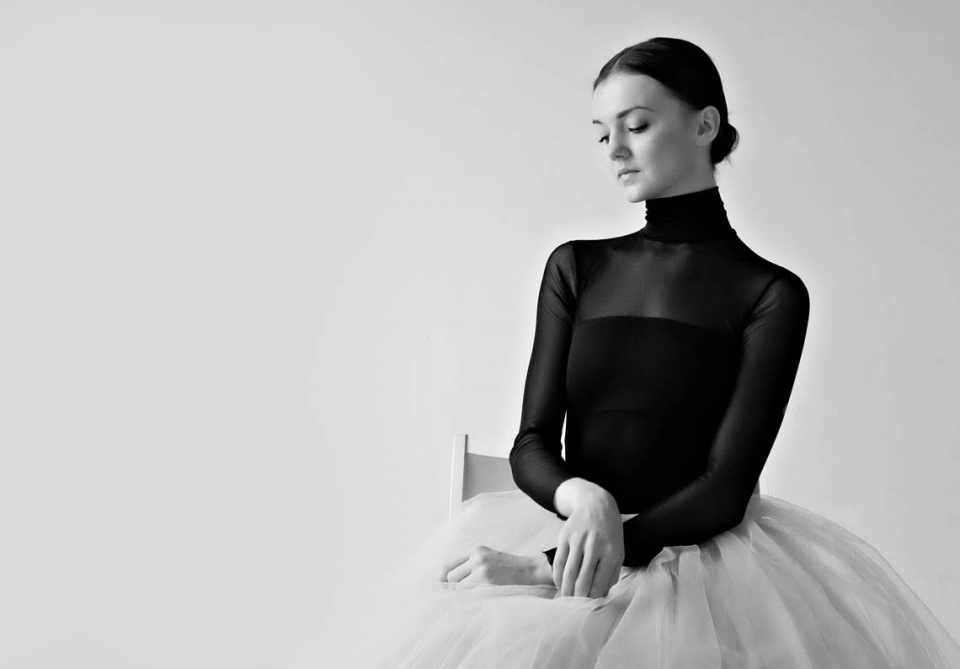
I came to Russia because of ballet
An interview with Andrea Laššáková, Soloist with the Mikhailovsky Theatre St. Petersburg
In her childhood dance was a means of venting her excessive energy. It soon developed into a hobby and later into a passion and a calling. She began her dancing career at the Slovak National Theatre. Later, as a member of the Finnish National Ballet in Helsinki, she came into contact with the repertory of world-renowned choreographers. Today, she is a soloist with the prestigious Mikhailovsky Ballet Company in St. Petersburg – a city whose history is intimately intertwined with the history of ballet.
Many young girls dream of becoming ballet dancers, but only a handful manage to make the dream a reality. Do you remember your beginnings, your first dancing steps?
As a child, I was very skittish and hyperactive. My parents therefore decided to sign me up for dance classes at a local arts school. I was six years old. Although my first dancing steps were not in ballet, I remember that I really enjoyed dancing from the start. It was basically the only thing that could keep me focused. At that time I had never thought about doing ballet. That changed when I was in my fourth year and my grandma discovered an article in the paper about a dance conservatory that was holding an open day. Perfect timing. I couldn't make the open day because of an appendix operation, but I did make the auditions. When I learnt that I had been accepted, I wasn't too excited because the conservatory was in Bratislava, which was quite far from my home, family and friends. I had no idea that leaving for Bratislava would completely change the course of my life.
Many people, for whatever reasons, separate their hobbies from their professions. When did your hobby become your profession; or rather: when did you make the transition from 'childish dancing' to pursuing your life's calling?
I think during my time in arts school it was still more or less 'childish dancing'. That persisted even into my first year at the Eva Jaczova Dance Conservatory in Bratislava. Everything is new and exciting for a ten year-old girl; nothing is too serious. But at the end of my first year, I began to appreciate ballet on a more profound level. My teacher Klára Škodová had a major role in that. I began to gradually explore and immerse myself in the mysteries of this art form, I took my first steps on the stage of the Slovak National Theatre in The Nutcracker. Ballet got under my skin, so to speak. It became my hobby and my lifestyle. I had no other option but to become a professional dancer.
Studying at the dance conservatory means eight years of hard work in the ballet room, separation from one's family, great self-discipline, as well as the opportunity to star in the productions of the Slovak National Theatre Ballet Company, meet professional dancers, and discover the wonders of ballet. How do you look back at this time?
It was a beautiful and exciting time. Studying at the conservatory was a unique experience, completely unlike studying at a normal primary or secondary school. I was given many opportunities to dance and to travel. The experience I gained allowed me to grow and move ever forward. My beginnings, however, were far from easy. There was a lot of crying and a sense of separation. But thanks to the great people in our class and my roommate at the boarding house, the eight years I spent in Bratislava were wonderful. The school and boarding house really gave me a sense of what it's like to work in theatre. I learnt independence, assertiveness, and self-reliance. I also mustered the courage to follow my dreams. Learning from professional dancers and having the opportunity to perform in Slovak National Theatre productions during my studies gave me great motivation and gradually deepened my love for ballet.
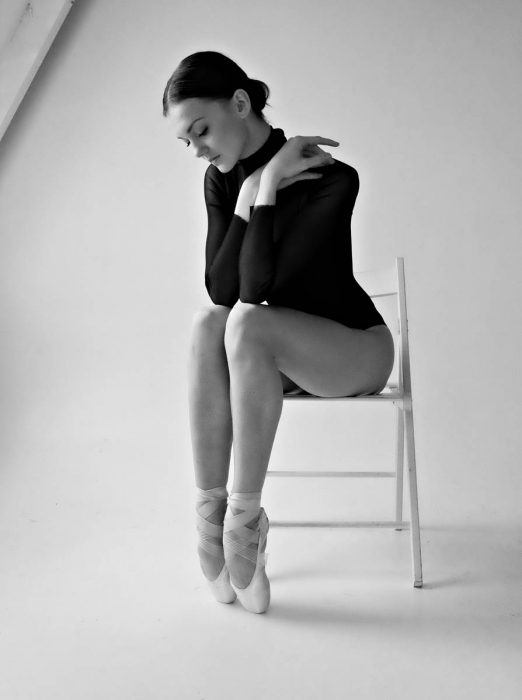
A dancer's success depends not only on their talent and ambition, but also, perhaps more importantly, on the guidance of their teachers. It is often they who form the students' relationship to dance and prepares them, both professionally and personally, for life on stage. Were you prepared for that life?
It goes without saying that the character and approach of the teacher are very important. I was fortunate to have great teachers who, from very early on, taught me a lot both professionally and personally. I am most indebted to Klára Škodová, who, as I have already said, was my instructor in classical ballet. I remember that she always used to say that a house without strong foundations will easily crumble, and it was thanks to her that I really built up my technique. She taught me discipline, which is very important in our profession, and also respect for myself and others. She really managed to get the most out of me. I am also very grateful to Karin Alaverdian and Bakhram Yuldashev.
Upon completing your studies you got your first placement at the Slovak National Theatre Ballet Company. How did you fit in and adapt to the new lifestyle, to the theatre regimen?
The change in regimen was definitely something. On the one hand I was quite relieved that I was no longer under the supervision of the teachers. I felt I had greater freedom. Also, in the eight years I spent at the boarding house, Bratislava had become something of my second home. I got to know many members of the company and acquainted myself with the repertory. On the other hand I had to learn to be truly self-sufficient. I lived alone, organised my own schedule; I just had to learn to fend for myself.
What did you learn on your first stage?
My professional beginnings with the Slovak National Theatre Ballet Company were more difficult than I had expected despite the fact that I was performing on a home stage and knew the repertory. During this time I learnt patience and that if I wanted to keep improving, I had to work very hard.
How do you view the conditions and opportunities that the Ballet Company provided?
The Slovak National Theatre was the springboard for my career as a ballet dancer. I was very young – only eighteen years old – when I joined the ensemble, and immediately I was given the opportunity to dance in classical productions and in almost every show that season. The greatest school for a dancer is the theatre.
After two seasons with the Ballet Company, you decided to leave for Finland. Describe your beginnings in Helsinki.
It was my classmate Samuel Števík who, in a sense, steered me towards Helsinki. He was a member of the ballet company at the Finnish National Opera, and he told me everything I needed to know about the ensemble, their repertory and working conditions. I decided to audition in Finland at a time when I was given a chance to study for the character of Odette in Swan Lake. A few months later, I was already a member of the Youth Company, which is the junior ensemble of the Finnish National Opera. They participate in all of the main company's productions and conclude the theatre season with their own show. My transition into the Finnish National Ballet was certainly a challenge. I had to tackle the language barrier and work in an international group. Fortunately there were some Czechs and Slovaks there, so I didn't feel too alone.
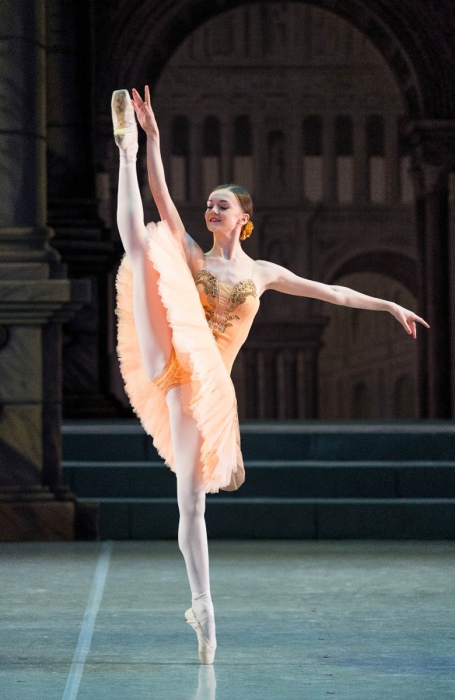
Different repertory, new dance styles… Were you technically prepared for the different training system, the new movement repertoire?
The Finnish National Opera ensemble has a very interesting and rich repertory. They stage a number of shows of the classical, neoclassical, and modern dancing traditions. The shows are arranged in blocks which means that you perform a different show each month while simultaneously rehearsing for a new premiere. Furthermore, you have a new ballet master coming in every two weeks. Each has different expectations and you need to quickly adapt to his or her style. The training system was completely different to what I had known in Slovakia. It's far more demanding, as it's expected that every dancer work independently. I think that the decision to leave for Helsinki was a good one. Working in the theatre with my colleagues and living in Helsinki gave me greater confidence.
Could you name any specific projects which have influenced you as an artist?
I would probably say the chance to dance the pas de deux in Glass Pieces by choreographer Jerome Robbins and the chance to share a role in In the Middle Somewhat Elevated by the world-renowned William Forsythe. It was also great to be able to work and dance with ballet director Kenneth Greeve. Another exciting experience was a project that allowed dancers to design their own choreographies. I realised the vision of my best friend Thibault Monnier which he had designed for the Youth Company.
After some time, you decided to leave Finland and go to Russia – the ballet superpower of the world. How did you come to join the prestigious Russian ensemble?
When still at school I dreamt of joining a Russian ensemble and being able to dance in a country where classical ballet has such a strong tradition. I would never have thought that I would actually get there. My road to St. Petersburg was a lot simpler than I had imagined. Mikhail Messerer, the director of the Mikhailovsky Theatre Ballet Company, came to Helsinki as a guest ballet master. It was he who noticed me in training and asked if I would like to work in Russia. I went to St. Petersburg for an individual audition and then had to decide whether to leave an ensemble that I had grown very fond of. Finally I determined that working in Russia would further my career. Leaving Helsinki was really difficult because I liked the city, and moreover, I was leaving in the middle of the season.
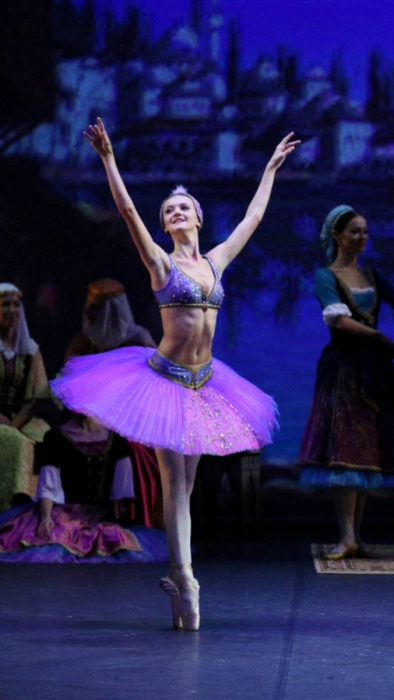

Geographically speaking, Helsinki and St. Petersburg are quite close to each other. That being said you were leaving an international ensemble in a modern cosmopolitan city and joining a predominantly Russian ensemble with centuries of tradition in the historic city of St. Petersburg. How did you view that transition?
It was really, really difficult. I didn't know anyone, plus the Russian mentality is very different from the European one. There was also the language barrier, the sheer physical difficulty of the trainings, and the return to a boarding house – or rather, a condominium for the theatre crew. Beginnings are usually difficult, but you have to adapt to changing circumstances, connect with your colleagues, and maintain an inner balance and calm. It's important to appreciate the chance to discover a new culture, learn a new language, get to know new people and further your career. I came to Russia because of ballet.
I assume the change had to do not only with the mentality and the language, but also with the repertory.
Of course. In Russia, we mostly stage classical shows. The trend in Europe is slightly different – the repertory is more balanced – but I actually prefer classical ballet. Indeed, the classical repertory was one of the main reasons why I decided to come to Russia. We stage a great many shows, perform six days a week, and the ballets alternate, so we don't work in blocks. Ballet has a strong social standing in Russia and ballet dancers are considered real artists, even celebrities. Our theatre is located in the heart of St. Petersburg and all of our shows are always sold out.
There are also some modern choreographies in the repertory, such as the ones by Spanish choreographer Nacho Duato, which serve as a reminder of his recent tenure with the company.
Indeed, there are some choreographies by Nacho Duato, but I don't star in any of them because I only joined the company after he had left for Berlin. Watching Duende, I look back fondly at the times when Nacho used to stage that show in Bratislava.
To be part of an ensemble in the heart of the city of Peter the Great surely has its perks. One of them is the chance to work with ballet masters and teachers, many of whom are considered legends in the world of dance.
It is certainly very rewarding to be able to draw on the experience of dance instructors who teach the Russian School. Many great teachers work here and carry the legacy of traditional Russian ballet. For example, there's my tutor Tatiana Legat, wife of the late great Yuri Soloviev. She took me under her wing and trains me in something that we might call the Old Russian School. She has an impeccable sense for music. She knows every detail, every movement and expression. Despite the difficulty of the trainings, she helps me a lot and I really cherish her very much.
The Mikhailovsky Ballet Company also boasts many famed dancers, such as Natalia Osipova, Leonid Sarafanov and Vladimir Vasiliev [viewers in Bratislava could see all three performers at the dance galas in the Slovak National Theatre, Ed.] All of them are stars of the world's greatest theatre stages. How does it feel to stand on stage together with such legends?
They are world-class ballet dancers. It's riveting to watch any of them perform on stage. They're always professional, always well-prepared and perfect. On the other hand, they are completely normal people – they're my colleagues. To work in a company with such spectacular performers would be a source of inspiration and motivation for any dancer.
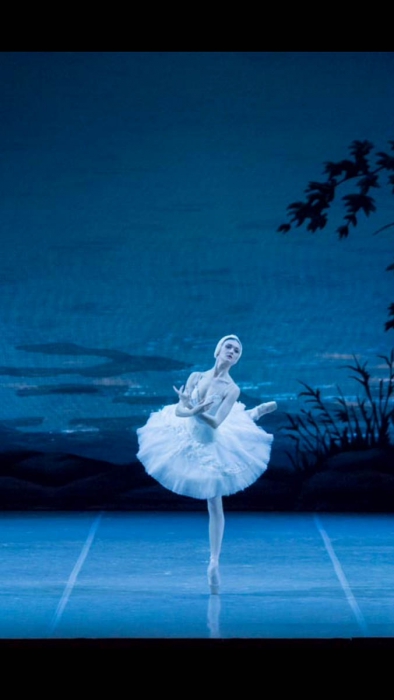
St. Petersburg – the city of emperors, a metropolis with an almost magical historic centre, which can satisfy every art connoisseur, is also the city of the revolution which brought about the collapse of the Russian Empire. How does one adapt to life in the city of golden spires and astonishing orthodox temples?
I fell in love with St. Petersburg the moment I got here. It's a big, busy and beautiful city with a rich and turbulent history, magnificent buildings and temples, and it's always teeming with locals and tourists. There's always something new to see and explore. The city offers much in the way of leisure. I live in a house which is situated between the Kazan Cathedral – the absolute pinnacle of Orthodox architecture – and the Church of the Saviour on Blood on the Nevsky Prospect in the very centre of St. Petersburg. I've become accustomed to life in Russia. I feel great here. Also, the food is brilliant.
St. Petersburg is not just temples, palaces, and lift bridges. It's also home to one of the most famous ballet schools, the Vaganova Academy, and to many ballet companies, the most famous one, of course, being the Mariinsky Theatre Company. Is there rivalry between the Mariinsky and the Mikhailovsky?
I haven't felt any rivalry. The Mariinsky Company is huge. They have great shows and legendary dancers. They will always be number one. The Mikhailovsky Company is smaller and we're in a smaller theatre. But we, too, have great dancers, an exciting repertory and 100% attendance, so we're doing all right.
What do you consider to be your greatest success with Mikhailovsky?
I'm still waiting for that one. Seriously though, all the work I've done with this company has been a success. To me, my most notable role was that of the Dryad Queen in Don Quixote. I am currently studying to play Myrtha in Giselle.
Your professional dreams?
I really like narrative ballet. I would also like to dance main characters, most of all Tatiana in Onyegin. I love that show, both the music and the story. I would also love to do Odette in Swan Lake or Giselle in Giselle. I'm currently focusing on the repertory in our theatre and preparing a tour in Japan. I want to spend at least another year in Russia and then I'll see what next.
Could you compare the three companies you have worked with?
Each company gave me something different and furthered my career. Each was a completely unique experience.